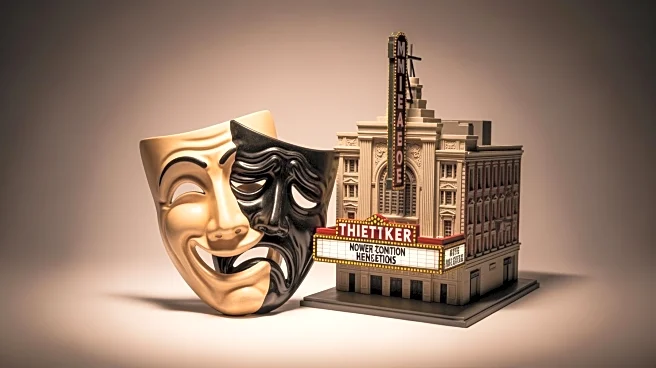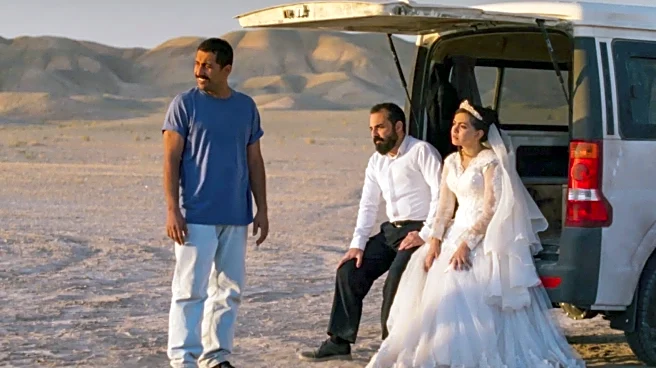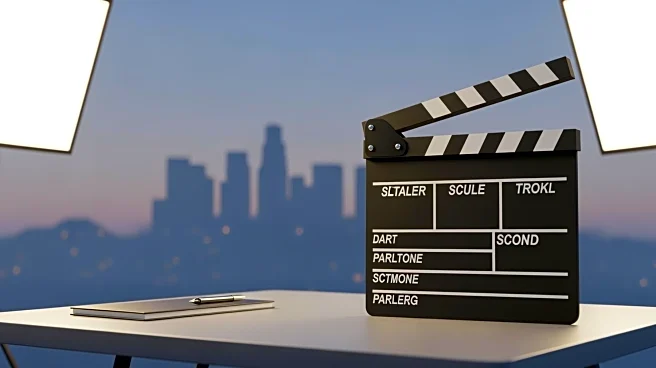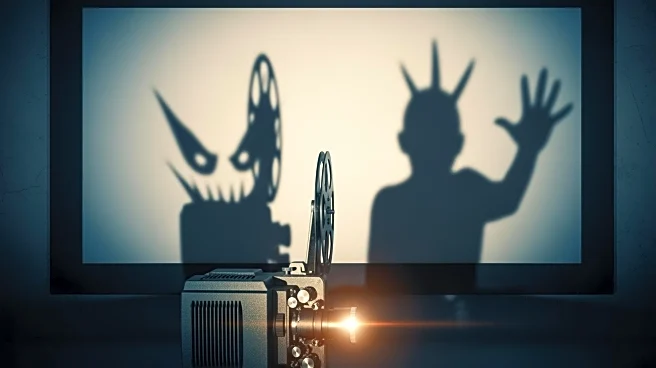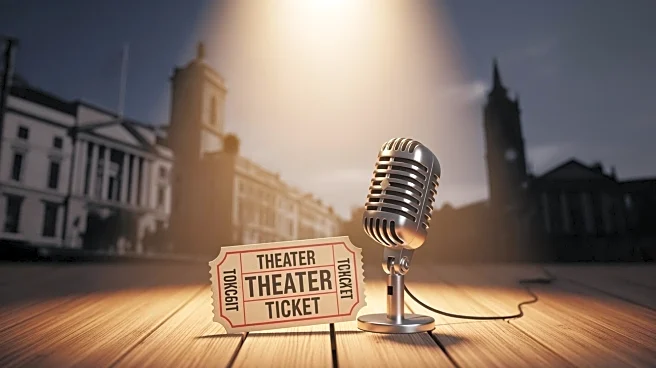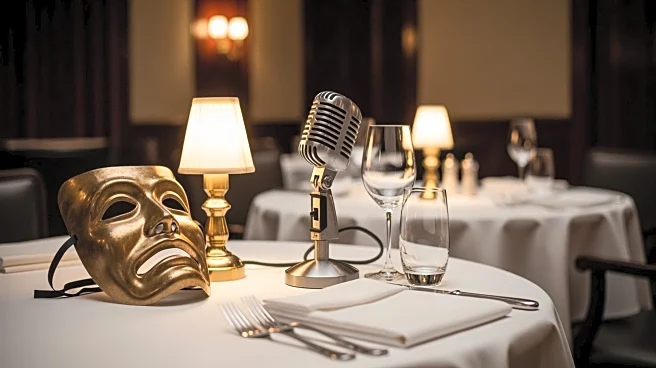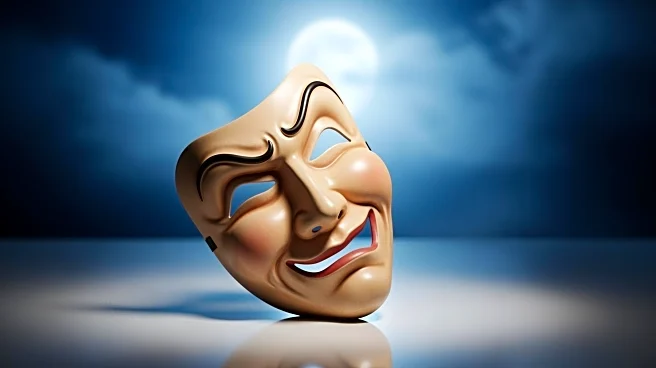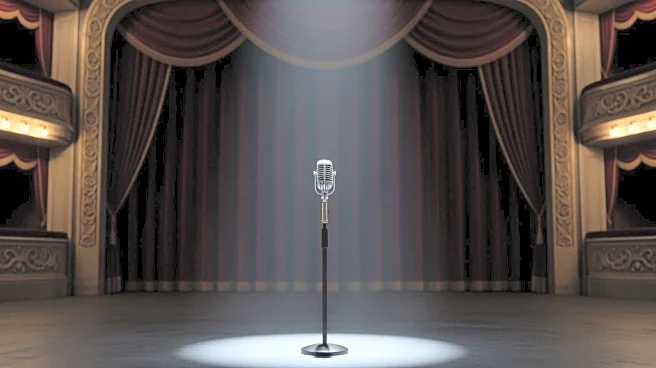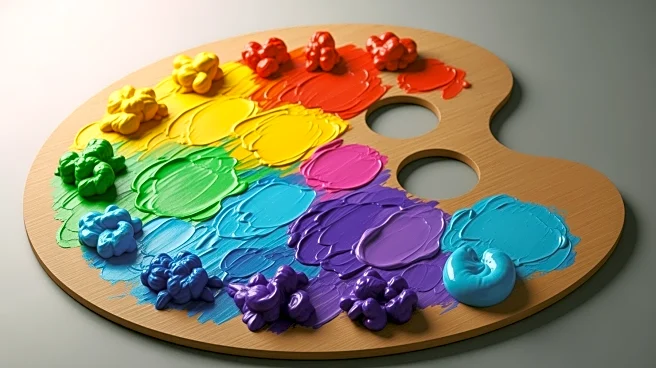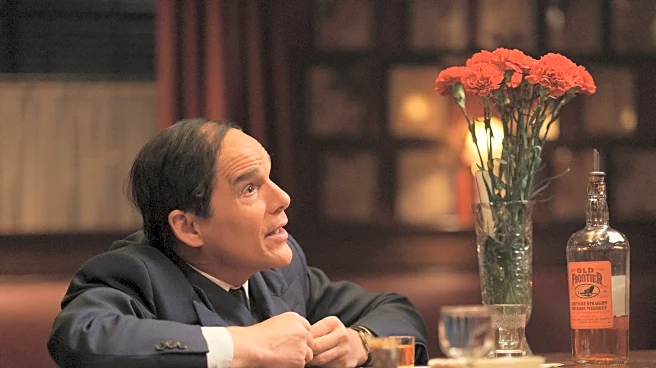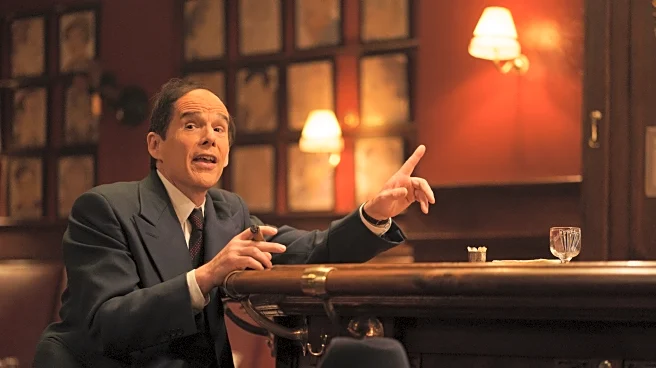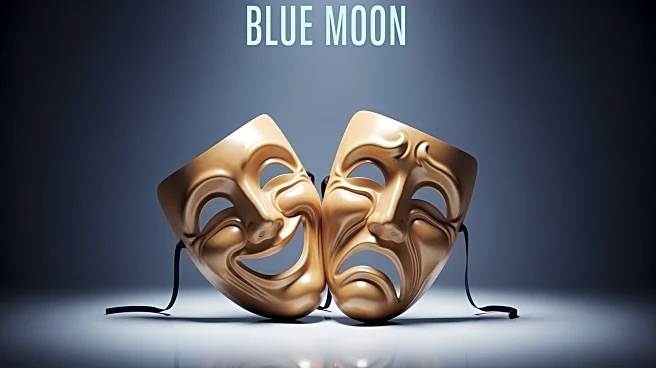What's Happening?
Ethan Hawke and Bobby Cannavale are starring in the new movie 'Blue Moon,' which features a detailed replica of the iconic New York restaurant Sardi's. The film, directed by Richard Linklater, is set on March 9, 1943, during the opening night of Rodgers
and Hammerstein's 'Oklahoma!' Due to logistical constraints, the production team built a replica of Sardi's in a Dublin film studio. The set design, led by Susie Cullen, meticulously recreated the restaurant's ambiance, including its famous caricatures and color tones, despite Cullen never having visited the original location. The film's authenticity was further enhanced by Hawke and Cannavale's research visits to the actual Sardi's, where they even shared drinks with Broadway legend Patti LuPone.
Why It's Important?
The film 'Blue Moon' highlights the enduring cultural significance of Sardi's, a staple of New York's theater district since 1927. By recreating this iconic venue, the movie pays homage to Broadway's rich history and its influence on American entertainment. The project also underscores the challenges and creativity involved in film production, particularly in replicating historical settings. For the actors, the experience offered a unique opportunity to delve into the world of 1940s Broadway, enriching their performances and connecting them to a pivotal era in theater history. This film could attract audiences interested in both historical dramas and the behind-the-scenes world of Broadway.
What's Next?
As 'Blue Moon' is now in theaters, its reception will likely influence future projects that aim to recreate historical settings. The film's success could encourage more productions to explore similar themes, potentially leading to a resurgence of interest in Broadway's golden age. Additionally, the movie's release may spark discussions about the preservation of cultural landmarks like Sardi's and their role in contemporary storytelling. The involvement of well-known actors like Ethan Hawke and Bobby Cannavale may also draw attention to the film, potentially boosting its box office performance and critical acclaim.
Beyond the Headlines
The film's production highlights the intersection of art and commerce in the film industry, where budget constraints often necessitate creative solutions. The decision to film in Dublin rather than New York reflects broader trends in the industry, where location choices are influenced by financial considerations. This aspect of the production may prompt discussions about the economic factors that shape filmmaking and the impact of such decisions on local economies. Furthermore, the film's focus on a historical setting raises questions about the accuracy and responsibility of portraying real-life events and places in media.
